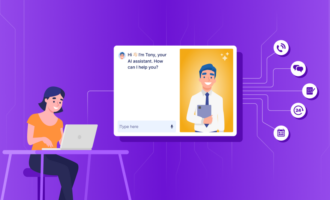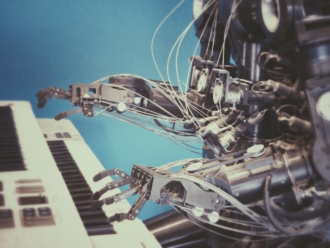Artificial intelligence (AI) has transformed industries, enabling businesses to automate, optimize, and innovate. Among the many kinds of AI available, two major types are generative AI and predictive AI.
While both use advanced algorithms and large datasets, their purposes, methodologies, and applications differ significantly. For organizations wanting to harness AI technologies effectively, it’s essential to understand these differences.
What is generative AI?
Generative AI is a groundbreaking field that has gained significant traction recently. Its ability to mimic human creativity and produce original outputs makes it a game changer in various areas.
Generative AI is a type of artificial intelligence that generates new, original data based on patterns observed in its training dataset. By understanding the structure of input data, it can create outputs that mimic human creativity or intelligence.
Generative AI often uses neural networks, particularly (GANs) and transformer-based models like GPT (generative pretrained transformer). These technologies allow machines to learn from massive datasets and produce coherent and contextually relevant outputs.
Ways to use generative AI
- Content generation: Producing articles, blogs, and social media posts
- Creative tasks: Designing graphics, composing music, or generating artwork
- Simulations: Creating synthetic data for testing algorithms or training machine learning models
What is predictive AI?
Predictive AI helps organizations anticipate trends and make data-informed decisions. Its ability to analyze patterns and forecast outcomes is invaluable in a fast-paced world.
Predictive AI analyzes historical and current data to forecast future events or trends. It’s great at identifying patterns and correlations within datasets and providing useful insights.
Predictive AI uses machine learning algorithms like decision trees, support vector machines, and regression analysis. These models analyze large datasets and continuously improve their accuracy over time.
Common uses
- Risk assessment: Evaluating creditworthiness or predicting insurance claims
- Demand forecasting: Anticipating market trends and inventory needs
- Customer insights: Personalizing recommendations in e-commerce and marketing
Generative AI vs predictive AI: Key differences
Understanding the distinctions between generative and predictive AI is essential for leveraging their strengths effectively. This section highlights the key differences between these two technologies.
| Aspect | Generative AI | Predictive AI |
| Purpose | Creates new data or content | Forecasts future outcomes |
| Core Methodology | Neural networks, GANs, transformer models | Machine learning algorithms, regression |
| Output | Original content or data | Predictive insights and trends |
| Applications | Creative industries, simulations | Business operations, decision-making |
| Limitations | Prone to biases in training data | Requires high-quality data for accuracy |
Use cases of generative AI and predictive AI
Generative and predictive AI have distinct use cases that demonstrate their unique value in different industries. This section explores how these technologies are applied and their transformative impact.
Generative AI in creative industries
- Art and music: Generating unique artwork or composing music
- Content creation: Writing blog posts, creating marketing copy, and generating social media content
- Video game design: Producing realistic character models or virtual environments
Predictive AI in business operations
- Financial modeling: Forecasting market trends and investment risks
- Inventory management: Optimizing stock levels to meet demand
- Healthcare: Predicting patient outcomes and identifying potential diseases
Overlapping applications
- Healthcare diagnostics: Both generative and predictive AI can assist in medical imaging analysis and personalized treatment plans.
- Personalized marketing: Generative AI creates customized content, while predictive AI identifies target audiences and their preferences.
Benefits of generative AI and predictive AI
Generative and predictive AI have plenty of benefits for organizations across industries. Understanding these advantages can help businesses determine which AI best suits their needs.
Benefits of generative AI
- Creativity and innovation: Enables businesses to create novel designs, content, and solutions
- Efficiency: Automates creative processes, reducing time and resource costs
- Personalization: Generates content for specific audiences
Benefits of predictive AI
- Informed decision-making: Empowers organizations with data-driven insights
- Risk mitigation: Helps identify potential threats and implement preventative measures
- Operational efficiency: Streamlines processes through accurate forecasting and resource optimization
Final insights: The role of AI in shaping the future
Generative AI and predictive AI are powerful tools reshaping industries with their unique capabilities. While generative AI excels in creative tasks and data synthesis, predictive AI is indispensable for forecasting and decision-making. Understanding their differences and applications allows businesses to leverage these technologies effectively, driving innovation and efficiency.
Whether your goal is to enhance creativity or improve operational accuracy, generative and predictive AI offers immense potential to meet your needs. Embrace the future of AI by exploring how these technologies can transform your industry.
Photo by Pixabay

















































Send Comment: